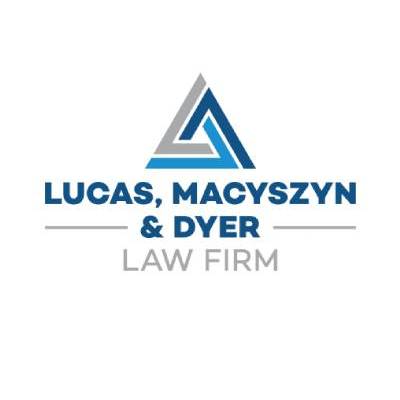
Many people think of a class action lawsuit interchangeably with multidistrict litigation. Since they are familiar with a class action, they automatically think that any large-scale litigation against a defendant is a class action case.
A class action is one single lawsuit an entire class brings, while MDL is a series of individual lawsuits relying on a common set of facts.
What Is an MDL Case?
Multidistrict litigation is relatively new in the federal judiciary. In 1968, Congress passed a law to increase efficiency in large-scale litigation. They created procedures that allow for multi-district litigation.
MDL begins when plaintiffs file individual lawsuits. People harmed by an allegedly defective product will file cases in different venues in federal court. Some may choose to file their cases in state court.

Plaintiffs may request to consolidate the cases as part of multi-district litigation. These cases will move to one district, usually where the defendant is based or where the most harm occurred. One judge will preside over the early parts of the case.
The Requirements for an MDL Case
MDL also needs judicial approval to proceed. The main requirement is that the cases are similar.
For example, the recently dismissed Zantac litigation was consolidated as MDL because all the cases had identical facts. The medication became hazardous because its composition changed to produce a dangerous and possibly carcinogenic substance.
It is not one judge who decides whether cases can proceed as MDL. Instead, the Judicial Panel on Multidistrict Litigation makes this decision based on whether the cases are related.
MDL Cases Proceed Together for Purposes of Discovery
The primary efficiency that MDL creates is common discovery among the plaintiffs. When you are dealing with large-scale litigation, there is going to be an extensive body of evidence that can be used to present a case. Theoretically, MDL should help both the plaintiffs and the defendants. Each plaintiff will not have to fight for the necessary evidence in discovery. From the defendant’s perspective, they will not have to respond to thousands of individual requests for information in discovery.
However, large companies often oppose requests to consolidate cases as MDL. They know that approval will make it easier to sue them, allowing plaintiffs to gather large amounts of evidence they can use against them.
MDL Cases Are Individual Lawsuits
Each MDL case is tried on its own in front of a jury. Once the common facts are developed, the attorney will take those facts and use them to make the arguments to persuade the jury. Each jury will reach its individual decision on a case. The plaintiff has a legal obligation to prove their case by a preponderance of the evidence.
Different juries can reach different results with the same operative facts. Often, a company will win some bellwether cases while losing others. The company’s early record will dictate its strategy going forward.
In some instances, companies may also fear that a successful MDL can encourage a flood of new cases, causing them to incur substantial costs in defending against the collective claims. However, the MDL process aims to manage and prioritize cases effectively, ensuring that meritorious claims proceed while discouraging frivolous ones.
Ultimately, the MDL process seeks to promote fairness, efficiency, and judicial economy in handling complex litigation. While it can pose challenges for defendants, it equally benefits plaintiffs, facilitating the discovery and presentation of evidence necessary to seek justice on a large scale. As with any legal procedure, the MDL system continues to evolve and adapt to strike the right balance between the interests of all parties involved.
Class Action Cases Are a Single Lawsuit
In an MDL case, each plaintiff has their own attorney. It is common for one attorney to handle many cases that are part of the MDL. On the other hand, one attorney is appointed to represent the class in a class action lawsuit. Many attorneys vie for the right to become the class attorney because it means that they will get the contingency fee in a successful case.

There is one class action lawsuit. The plaintiffs will either win or lose the case. Even if the judge grants class status, they can still dismiss the case entirely at a later point in time. There is one result for everyone. On the other hand, there are multiple outcomes in multidistrict litigation.
The Requirements for a Class Action Lawsuit
Federal Rule of Civil Procedure 23 outlines strict requirements for class action lawsuits:
- The class is so large that the joinder of all members is impracticable;
- There are questions of law or fact common to the class;
- The claims or defenses of the representative parties are typical of the claims or defenses of the class; and
- The representative parties will fairly and adequately protect the interests of the class
Getting class certification is difficult (much more so than in MDL). For example, each plaintiff may have different facts in a product liability lawsuit. The plaintiffs may have suffered various injuries if the lawsuit involves a defective pharmaceutical drug. In addition, the plaintiffs may have taken the medication for a varying amount of time. Large-scale product liability claims may not suit a class action lawsuit.
In class action litigation, the defendant usually does not want the lawsuit to get class certification. A class action is an easier and more efficient way for the class to bring a large lawsuit against the defendant. Thus, the defendant will vigorously fight class certification at the outset of the case. In some cases, if they can persuade a judge to deny class certification, it can mean the end of the entire case.
One of the main reasons why cases will need to move forward as a class action instead of MDL is that the plaintiffs suffered different injuries. For example, in the Zantac litigation discussed above, the plaintiffs developed cancers of varying severities after taking the drug. In any personal injury case, you must prove causation to win, a determination made on an individual defendant basis.
The Damages Will be Different in a Class Action and MDL
In a class action, there is one recovery on behalf of the entire class. It follows that since everyone suffered the same injury, they will receive the same amount of money. They will apply to the settlement administrator for their share of the money. The amount of money that each plaintiff will receive depends on how many people file claims to get money.
In MDL, the award depends on the jury. Each jury can award different amounts. Some angry juries can assess punitive damages. For example, one jury in the significant Roundup litigation awarded the plaintiff almost $300 million (which the court later reduced on appeal to $20.5 million). Other plaintiffs also received significant amounts of money.
There Are Differences in Who Calls the Shots
In a class action lawsuit, the class representative (the named plaintiff) is the one who makes decisions on behalf of the entire class. If you are a class member, you have no say. You must rely on the representative to make the right decisions because they work with their attorney.
In MDL, there is a steering committee of attorneys who make the decisions in the early phases of the case. They invest the money into the case at the early stages. They will call the shots during the discovery process. Once discovery closes and the MDL case progresses toward trial, the individual plaintiffs will make the decisions after receiving advice from their lawyer. They can decide whether to become a part of the settlement.
During the settlement phase, individual plaintiffs in an MDL case will have the opportunity to decide whether they want to participate in the settlement that may be offered by the defendant or pursue their cases independently. Various factors can influence this decision, including the strength of their individual claims, the potential compensation they might receive through the settlement, and the advice from their attorneys regarding the specific circumstances of their cases.
Even though the steering committee plays a significant role in the early stages of the MDL case, the ultimate decision of whether to accept a settlement or proceed to trial lies with each individual plaintiff. This individualized approach allows for a fair resolution that considers the unique circumstances and interests of all parties involved.
Class Actions Are Voluntary, MDLs Are Not
Class members voluntarily join together to make the strongest possible case. They can elect to opt into the class. They can also opt out if they choose and pursue their action. The individual plaintiffs can decide to join the class, although most do in the end.
Plaintiffs have no choice about whether they join the MDL. When the Judicial Panel on Multidistrict Litigation (JPML) grants multi-district status, it automatically transfers the case to the district where it is being heard. You can live in Missouri, but a Georgia court hears your case, and you have no control.
Some plaintiffs may file their cases in state court because it gives them more control over their cases. An MDL only exists in federal court.
MDLs May Reach a Global Settlement
When a defendant begins to see that they are losing the early cases, they will often begin to understand their potential liability’s full scope and extent. They may then negotiate a global settlement that covers all the MDL suits.
If they successfully reach an agreement, the court will establish a settlement fund. Plaintiffs will then apply to the fund for their settlement, which will depend on the extent of their damages. For example, the Roundup MDL was settled for over $10 billion.
Defendants almost have to reach a settlement when there is a large-scale liability. They can be driven out of business if they continue to lose thousands of cases with significant jury awards.
Some companies have tried a complex legal maneuver called the Texas Two Step, where they set up a new subsidiary, fund it with limited money, and assign all claims. The new unit will immediately declare bankruptcy. Johnson & Johnson attempted this maneuver with the talc powder lawsuits, but a court found it an illegal use of the bankruptcy laws.
Contact an Attorney to Learn About How to File Your Case Properly
You will likely file an individual lawsuit if a product personally injured you. Further, if many others like it, your case will likely become part of an MDL case. MDLs are not just massive cases involving thousands of plaintiffs. You can even have MDL when there are only a handful of similar cases. Your attorney will help you determine whether to move forward as part of multidistrict litigation.
Class action cases are more suitable when you did not benefit from a defective product you purchased. For example, if the product did not work, the users may band together in a class action case because they all suffered the same harm of not getting the working product they paid for.
Your attorney will review the facts of your case to determine what type of lawsuit works best for you. The lawyer should have experience dealing with litigation that can grow to a mass scale. They should also have significant time in the courtroom to argue a case to a jury.
When you have a possible class action or an MDL, you are likely dealing with a large company. You should have a tough attorney who knows how to go up against the most prominent defendants to get their clients what they legally deserve in damages.


